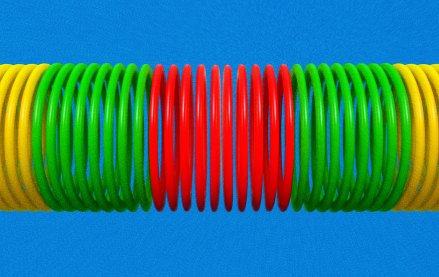
This article is a WTF explainer, in which we break down media and marketing’s most confusing terms. More from the series →
On the face of things, request duplication, or “bid duplication” as some might term it, is pretty self-explanatory for those familiar with the quirks of ad tech, although, as with most things in ad tech, it comes with nuance.
And so, for those eager to stay informed about how their company’s or clients’ money is being spent in the online advertising bidstream, it’s worth taking a step back to better understand the dynamics at play, especially given the rapid rate of change in ad tech.
Since the dawn of monetizing online advertising, the sector has been regarded as synonymous with complexity, with the industry’s “Mad Men” seemingly content to let the “Math Men” do their thing.
However, as programmatic media trading gained scale, the once-trivial ad tech tax hit scale, and since then, buyers have been eager to see how auction dynamics unfold. And that’s where much of the debate comes in. For some, it can be seen as the costliest quirk in programmatic media trading, but sell-side advocates can argue it’s a legitimate monetization tactic.
OK, so, what is ‘request duplication?’
Request duplication refers to the practice of sending the same ad opportunity — a single ad slot on a publisher’s site or app — to demand-side platforms multiple times. Rather than a one-to-one correspondence between an ad impression and a bid request, request duplication turns one ad slot into many bid requests. These can originate through different pipes — think Amazon’s Transparent Ad Marketplace, Google’s Open Bidding, Amazon TAM, OpenRTB, or Prebid — and through multiple resellers, or by manually triggering multiple outbound requests from the same supply-side platform.
Critics of such a tactic will argue that sending impressions to DSPs at different price points confuses a DSP’s algorithms, with the impact being that advertisers end up overpaying for their programmatic media buys.
However, some level of duplication can be justified for technical or commercial reasons (e.g., reaching buyers who use only specific buying paths), much of it is done to inflate scale and win more programmatic budget artificially. The practice is most prevalent among supply-side platforms (SSPs) that rely on high request volumes to attract spend from agencies and holding companies.
How is this executed within the bid stream?
One critique is that request duplication is a classic case of multi-hop reselling, public enemy number one during the heyday of supply-path optimization.
However, for a more nuanced take, it’s worth examining further, with Digiday sources asserting three core ways request duplication is operationalized:
- Multi-integration paths
A publisher uses several SSP integrations, with each integration triggering a separate bid request for the same ad slot. While this form of duplication may be valid — especially if certain DSPs or buyers only transact through specific pipes — it still inflates bid traffic.
- Multi-tap functionality
Also known as multi-impression, or multi-request tools, certain SSPs offer publisher-facing control switches within their platforms that allow them to specify how many times a single request should be sent out to DSPs. These are often marketed as a means to boost monetization.
- SSP gamification tactics
SSPs can manipulate bid requests to game DSP algorithms, according to some sources, telling Digiday, as a single request can pass through up to 70 intermediaries before reaching an SSP, with many of them sending parallel requests to the same DSPs. That’s a lot from any POV.
Tactics include:
• Breaking down a multi-size ad request into multiple single-size requests.
• Modifying bid request attributes (e.g., price floors, metadata) across multiple iterations of the same request.
• Sending the same request at different price points to stimulate higher bids.
• Stripping deal IDs to create “clean” open exchange bids that may appeal more to DSPs.
What’s the case for request duplication?
In programmatic advertising, SSPs are often judged by the number of bid requests they generate. Bigger numbers can imply more reach, coverage, and monetization opportunities. This makes inflated request volumes commercially attractive in at least three ways:
- For SSPs
They use high request counts to demonstrate market share to agencies and holding companies during RFP processes, in hopes of winning larger SPO deals.
- For publishers
Some SSPs encourage publishers to enable multi-tap tools, implying this will drive up yield, even if the resulting requests add no real value.
- For buyers (unknowingly)
DSPs are often designed to optimize for campaign KPIs at the lowest price. Duplicated requests at different prices increase the odds of a win, even if it means overpaying.
And what is the Impact on cost?
Request duplication has several downstream financial and operational impacts (see below).
- Inflated media costs
By receiving the same opportunity multiple times — often at varying price points — DSPs may end up bidding higher than they would in a single, clean request scenario. According to sources, some SSPs send out four versions of each request: three with different price points and one stripped for open market bidding. This strategy can mislead DSPs into overvaluing the inventory.
- QPS saturation
Most DSPs operate under QPS limits, and duplicated requests flood these limited pipes, resulting in DSPs spending compute power evaluating the same opportunity multiple times. This reduces the number of unique impressions DSPs can access and diminishes campaign performance.
- Wasted budget
When DSPs spend more to win impressions that are duplicated in the auction, buyers effectively pay a “duplication tax.” This could range anywhere from marginal increases to multiple times the true cost of the media, particularly when requests are sent five, 10, or even 20 times for a single impression.
Is request duplication good or bad for the market?
It depends on the context, and opinions still vary wildly, but widely accepted valid use cases include:
• Multi-integration to accommodate DSP preferences, for example, Google’s DV 360 prefers Open Bidding paths.
• Publishers send duplicated ad requests where one version is stripped of metadata (for a lower CPM) and another version includes full metadata (for a premium CPM).
Widely regarded abusive practices include:
• Reseller loops: Multi-hop chains that obfuscate origination and allow SSPs to extract high-margin revenue from intermediaries.
• Price point flooding: Manipulating the same request at different prices to extract higher bids is a direct breach of auction fairness and efficiency.
Who is responsible for addressing this?
Again, opinions vary, but the consensus is that responsibility is shared across the ecosystem:
• Publishers are advised to assess whether yield gains from duplicative requests justify the reputational and performance risk.
• SSPs are encouraged to assess if scale inflation, like multi-impression toggles, etc., benefits either side of the market.
• DSPs need more visibility into bid request provenance, as most are widely believed to be blind to the issue.
• Ad buyers must enforce accountability via contract terms and audit rights by prioritizing clean, efficient supply paths.
More in Media Buying

Ad Tech Briefing: Big Tech won 2025 (even when it lost)
How AI, commerce media and scale reshaped ad tech in 2025 to the benefit of Big Tech.

How brands shifted marketing and media strategies through year of tariffs
Marketers share how they navigated the maze of tariffs and regulatory changes this year.

Media Buying Briefing: Omnicom Media execs begin their pitch outreach ahead of an expected new-business glut
Omnicom’s acquisition of IPG is only a few weeks old, but its combined offer to the market will soon be put to the test as it meets with consultants.









